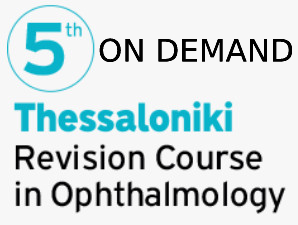Presented by: Thanos Vakalis MD
Edited by: Penelope Burle de Politis MD

Dislocation and displacement are inherent complications of any ophthalmic implant, whether occurring early or long after surgery. Numerous conditions, related not only to the original ocular pathology and surgical intervention but also to the patient’s long-term habits and environment, can predispose or lead an ocular device to shift from its initial insertion site.
For ocular implants directly associated with visual function, accurate repositioning of the optic component is the primary management strategy, both to prevent damage to other structures by the dislodged device and to restore the optic system of the eye to its intended configuration, ultimately reestablishing vision and avoiding other ophthalmological problems.
Although simply removing and replacing a displaced ocular implant is always an option, risks and benefits must be carefully evaluated on a case-by-case basis. Typically, if an ocular device is neither damaged nor directly causing inflammation, the likelihood of successful repositioning tends to outweigh the risks of extracting it and introducing a new foreign device.
In this video, recorded in the main operating room of the Ophthalmica Eye Institute in Thessaloniki, Greece, Dr. Thanos Vakalis (MD), specialist in retina and macula surgery, performs transcleral suturing of a displaced PMMA iris-IOL implanted 20 years earlier for aniridia in the right eye of a 73-year-old patient. During a follow-up visit, the lens was found to be anteriorly displaced, with its haptics touching the corneal endothelium, as confirmed by anterior OCT. At the time of surgery, the implant was situated at the posterior pole of the eye.
Following the initial stage (conjunctival dissection, IOL orientation marking, cauterization of bleeding vessels, trocar insertion, and IOL visualization at the posterior pole), the surgical steps and timing in the video are as follows: IOL-capture maneuvers through anterior segment side port 1 (00:01); anterior segment side port 2 (00:26); anterior vitrectomy (00:39); exteriorization of the upper IOL haptic (00:51); measurement of limbal distance to determine scleral suture sites (00:55); creation of transcleral suture site 1 (01:00); passage of scleral suture line through the lower IOL haptic (01:15); passage of scleral suture line through the upper IOL haptic and transcleral suture site 2 (02:33); tying of the scleral fixation sutures (03:45). After the conclusion steps (posterior pole inspection, internalization of suture knots, trocar removal, suture of puncture sites, and side port sealing): conjunctival suturing (04:20). The procedure ends with subconjunctival injection of antibiotics and cortisone, and a stably positioned, centered iris-IOL (05:57).
“The time is always right to do what is right.” – Martin Luther King, Jr.
Video:


